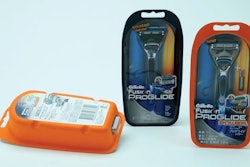Pat,
I read with interest your article on the use of crop waste as a biopolymer feedstock. I work for a packaging company that is really on the “green” kick and doing everything possible to reduce waste, cost, and emissions. However, I also grew up on a farm in Nebraska—cornfields as far as the eye could see. One thing my father adopted as I entered high school around 1980 was “no-till” farming. It is a drastically different way of farming that uses much fewer chemicals, fuel, and other resources to attain similar crop yields. Now, nearly everyone in South-Central Nebraska is using the same no-till methods.
One critical aspect of no-till is “duff.” It is the same material you describe as feedstock for the protective packaging Ecovative makes. It is also absolutely critical to the long-term viability of the soil. Remove the duff, and soon you’ve removed all the nitrogen and organic materials necessary for sustainable crop yields. The duff also provides water-absorbing capabilities and reduces runoff.
While you describe this as “… one of the most fascinating packaging stories in the decade to come,” I see it as a most alarming development. Unscrupulous farmers with short-term gains in mind will ruin their soil for years to come. Look for stories about excessive erosion and waterway siltation, plunging yields, and increased demands for things like anhydrous ammonia (inorganic fertilizers). While the story sounds like a magic bullet, unfortunately, the gun is pointed at the farmers’ heads.
Respectfully, Eric Davidson, Project Manager, Tetra Pak
Eric,
Yours is an interesting perspective, to say the least. I wonder if the role played by duff in growing corn is similar where cotton or oats or other crops are concerned? Would you mind if I forward your inquiry to Sam Harrington at Ecovative?
Pat
Pat,
Not at all. I would think the impact would be the same for any crop. The “yield” must be replaced by something—typically fertilizer or other soil augmentation(s). So if you change the definition of yield to be both the commodity (corn, cotton, oats, etc.) and the waste, something must be done to replace the organic matter, or the soil condition will suffer. Thanks for the reply! Please let me know what you find out from Sam at Ecovative.
Eric
Sam,
Hope you don’t mind taking a look at the exchange of e-mails below. How would you respond to Eric Davidson’s concern that today’s farms will suffer if we begin to use crop waste to make Ecovative products rather than using crop waste as duff?
Pat
Pat and Eric,
You raise an excellent question, and one that I wish got raised more often. Ultimately, by inventing a use for what in the past has been a “waste,” we’ve now shifted the definition of some parts of the plant to a “byproduct” or “coproduct.”
Right now, the crop byproducts that we use (oat hulls or stripper cotton gin byproducts) are already collected and removed from the farm. They are frequently used as animal bedding or for other uses not on the fields. We want to avoid situations where we are removing nutrients from the farm and requiring more synthetic fertilizers to be applied. Therefore, we are working with farmers to find ways of collecting only crop wastes that are already removed from farms. In an ideal world, these crop residues would provide value for a while as EcoCradle packaging and would then get composted and find their way back to soils in need of nutrients. That’s why we are actively involved with the efforts of the Sustainable Packaging Coalition and spending a lot of effort to educate our customers on best practices for composting and end-of-life options for EcoCradle.
Sam
Sam,
Thanks for your reply. It makes it much clearer for me. So nothing more is leaving the field than has historically been done. I was under the assumption that this was like wheat straw—normally left in the field, but potentially removed for a secondary use. This sounds more in alignment with corn-to-ethanol: where the “brewer’s grain” is reused as feedstock for cattle. Nothing more is removed from the field, but a secondary use is found for the waste generated.
Good luck! This sounds like a good opportunity. I could use a truckload of the compost once it’s available! ;-)
Eric



























